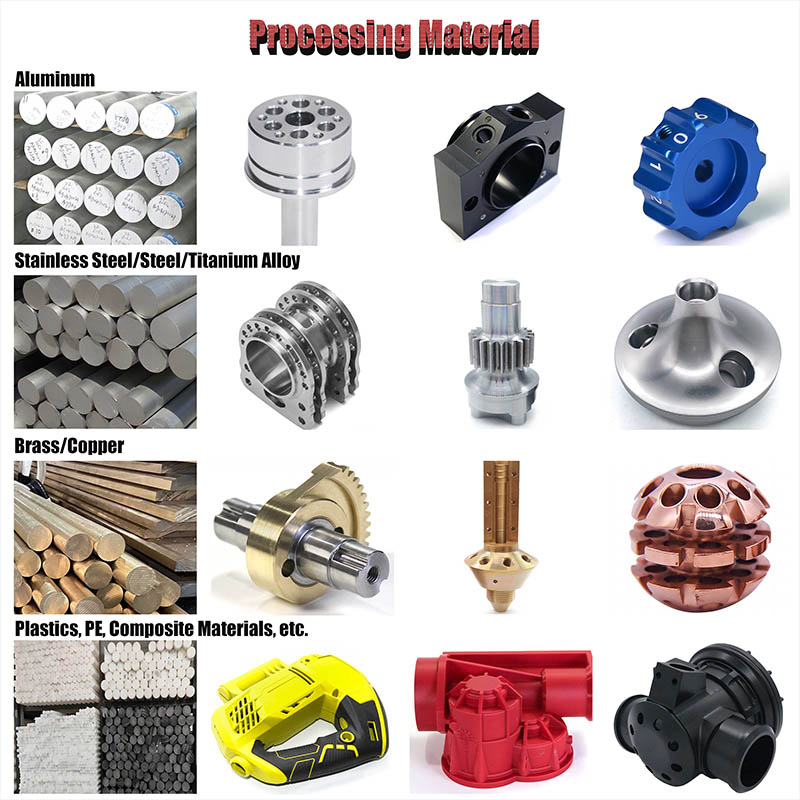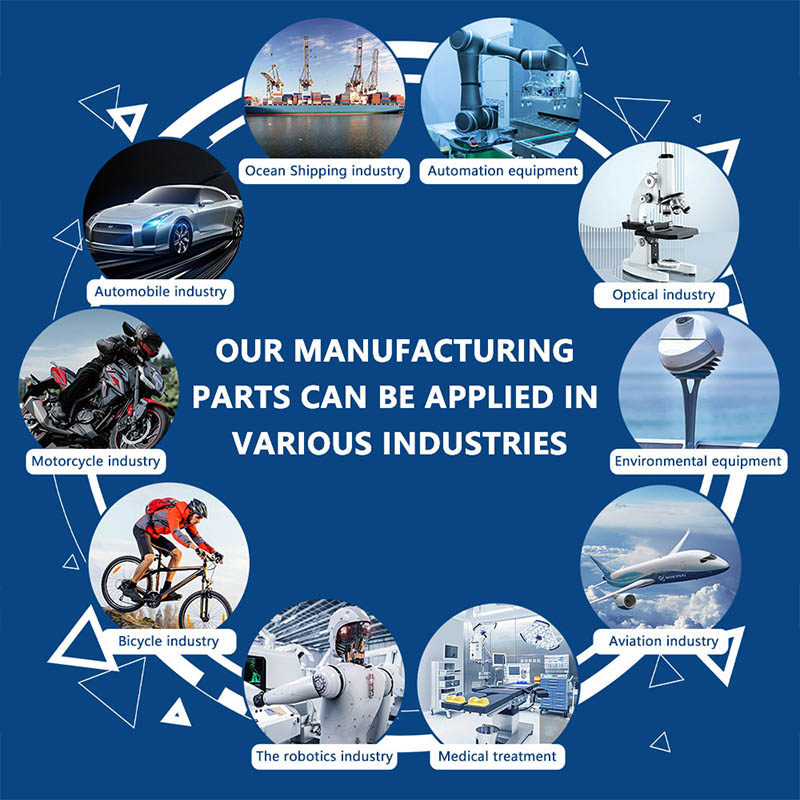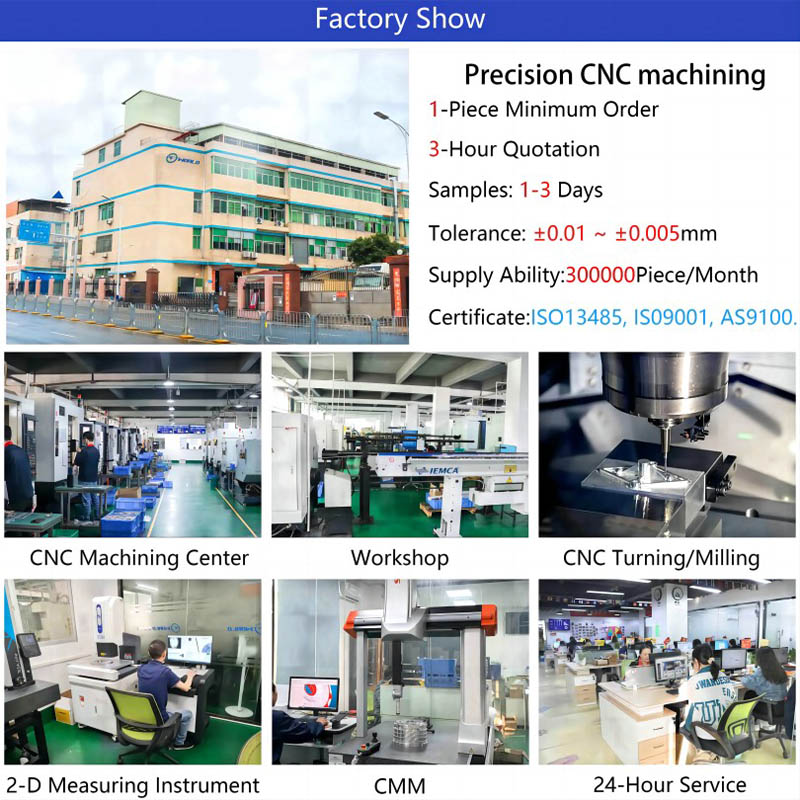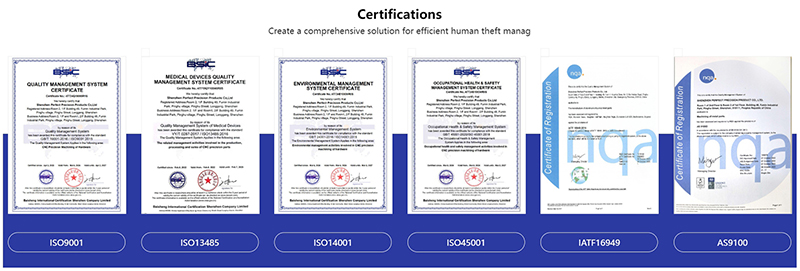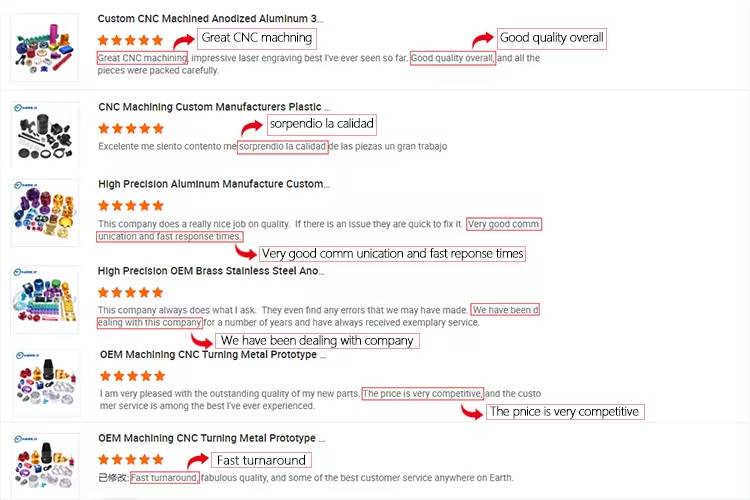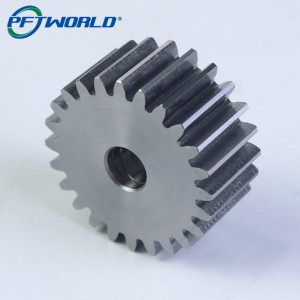High Precision CNC Machining Components
What Makes a CNC Component “High Precision”?
Precision parts usually fall into the tolerance range of ±0.005–0.02 mm, depending on the material and machining method.
From our shop’s actual data (based on 180+ lots manufactured from 2023–2024):
| Material | Typical Achievable Tolerance | Notes |
|---|---|---|
| Aluminum 6061/7075 | ±0.01 mm | Ideal for aerospace/robotics |
| Stainless Steel 304/316 | ±0.015 mm | Requires slower feed to avoid burrs |
| Titanium Grade 5 | ±0.02 mm | Heat buildup must be controlled |
| PEEK / Engineering Plastics | ±0.03 mm | Dimensional drift after cooling |
Real example:
While producing a batch of 2,000 medical stainless-steel connectors, our team used a dual-spindle turning center with in-process probing. The first-pass yield was 96.8%, and CMM reports showed flatness deviation under 0.006 mm, which is considered excellent for SS316.
These are the kinds of numbers you should expect when sourcing high precision CNC machining components.
How High-Precision CNC Machining Works
1. Engineering Review & DFM Optimization
Before cutting anything, good machinists run a DFM analysis to eliminate sharp internal corners, unnecessary tight tolerances, and risky thread depths. These edits alone reduce part cost by 15–25%.
2. Material Conditioning
For stainless and titanium parts above 20 mm thickness, we typically perform stress relief heat treatment to prevent warping—especially useful for long gear shafts and aerospace brackets.
3. Precision Machining (Milling + Turning)
-
5-axis machining for complex surfaces
-
Swiss turning for long, slender components
-
CMM in-process inspection for critical diameters
Most accurate machining comes from using cutters with a runout below 0.003 mm and stable tool temperature.
4. Surface Finishing
Depending on application:
-
Ra 0.4–0.8 μm for medical tools
-
Ra 1.6–3.2 μm for automotive housings
-
Anodizing, passivation, bead blasting, hard coat treatments
5. Final Inspection (CMM + Profile Scans)
In our facility, any high-precision batch above 50 pieces undergoes 100% visual inspection and 10% CMM sampling.
Common Problems With Precision Components
1. Deformation After Machining
Happens often in aluminum plates thicker than 10 mm.
Solution: Rough cut → natural aging 24 hrs → finish cut.
2. Inconsistent Tolerance Between Batches
Usually due to machine thermal drift.
Solution: Require your supplier to use in-process probing and temperature-controlled workshops (20–23°C).
3. Thread Damage During Transport
We once had a customer receive parts with minor thread scratches due to poor bulk packaging.
Solution: Ask for individual foam tray packing with torque-tested thread gauges.
Buyer’s Guide: How to Choose a Supplier for High Precision CNC Machining Components
1. Ask for Real CMM Reports
A trustworthy manufacturer will provide sample reports showing at least:
-
Dimensional distribution chart
-
Flatness and concentricity
-
Tool measurement logs
2. Compare Lead Times
From our experience with global customers:
| Project Type | Typical Lead Time |
|---|---|
| Simple turning parts | 3–5 days |
| 5-axis prototypes | 7–12 days |
| Large assembly machining | 15–25 days |
3. Evaluate Production Stability
Ask whether the factory uses:
-
Mitsubishi/Fanuc controls
-
HAAS/DMG/Okuma precision centers
-
SPC monitoring
These usually correlate with fewer rejected parts.
4. Don’t Ignore Packaging & Logistics
For small high-value components (gears, micro-shafts, connector pins), proper packaging can reduce damage rates by >60%.
Applications of High Precision CNC Machining Components
-
Aerospace brackets, hinges, and control modules
-
Robotics gears, sensor housings, linear motion parts
-
Medical surgical connectors
-
Automotive transmission and steering system components
-
Semiconductor fixtures and PEEK isolation parts
Each category demands different tolerances and surface requirements, which is why the supplier’s real-world experience matters more than theoretical capability.
FAQ
What tolerance is considered high precision?
Typically ±0.005–0.02 mm, depending on material and machining process.
Which materials are suitable for high-precision CNC machining?
Aluminum 6061/7075, stainless steel 304/316, titanium, brass, copper, and engineering plastics like PEEK.
How do I verify a factory’s precision capability?
Request CMM reports, machining videos, equipment lists, and sample inspection photos.
Application
FAQ
Q:What’s your business scope?
A: OEM Service. Our business scope are CNC lathe processed, turning,stamping,etc.
Q.How to contact us ?
A:You can send inquiry of our products,it will be replied within 6 hours;And you can contact dirrectly with us through TM or WhatsApp, Skype as you like.
Q.What information should I give to you for inquiry?
A:If you have drawings or samples,pls feel free to send us,and tell us your special requirements such as material, tolerance, surface treatments and the amount you need,ect .
Q.What about the delivery day?
A: The delivery date is about 10-15 days after receipt of payment.
Q.What about the payment terms?
A: Generally EXW OR FOB Shenzhen 100% T/T in advance,and we can also consult accroding to your requirement.



